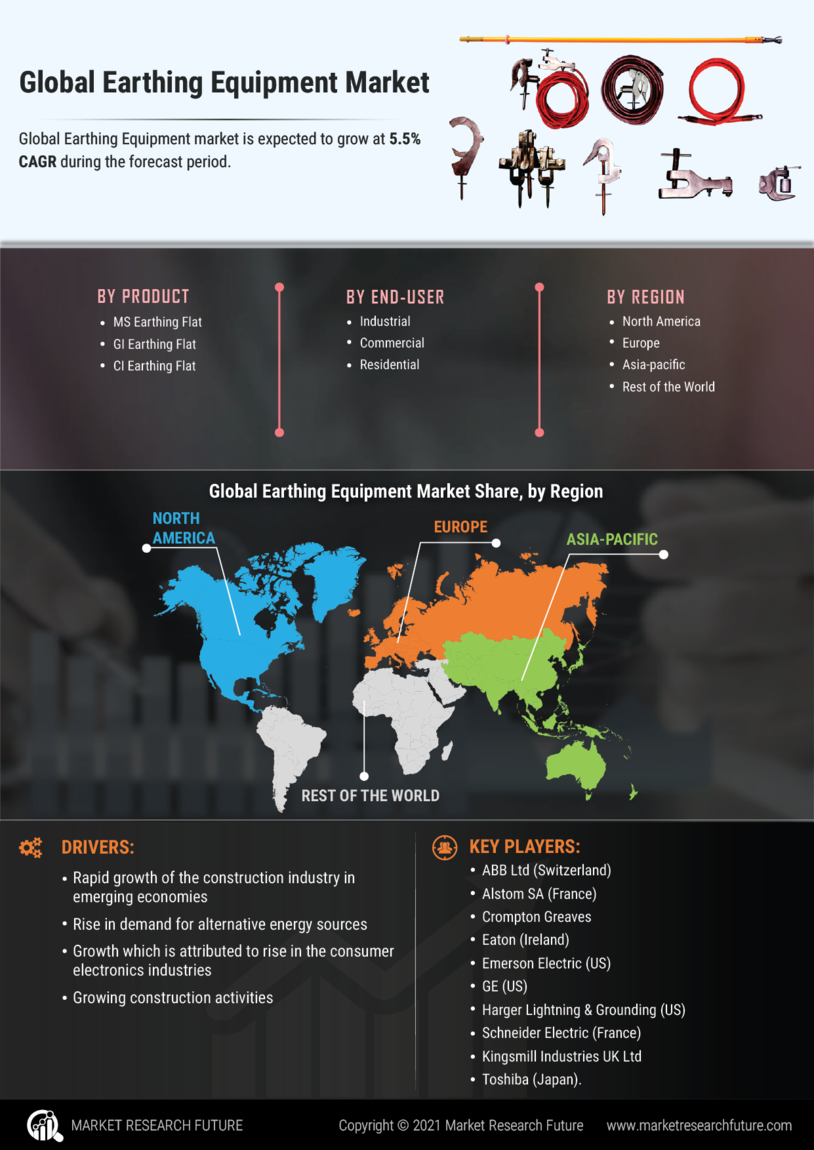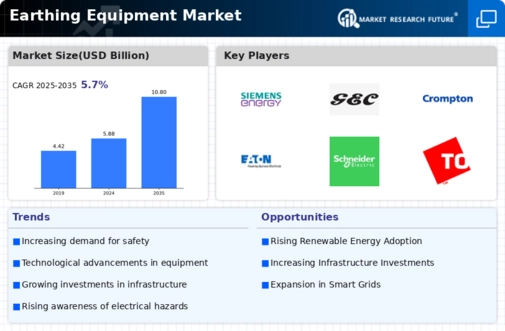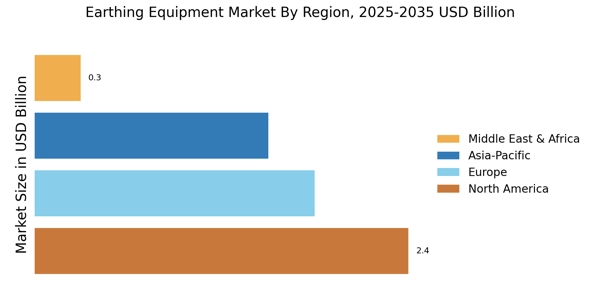Increasing Infrastructure Development
The ongoing expansion of infrastructure projects across various sectors, including transportation, energy, and telecommunications, is driving the demand for earthing equipment. As countries invest in modernizing their infrastructure, the need for reliable earthing systems becomes paramount to ensure safety and operational efficiency. The earthing equipment market is likely to benefit from this trend, as proper earthing solutions are essential for protecting electrical systems from faults and ensuring compliance with safety regulations. In recent years, the infrastructure sector has seen substantial investments, with estimates suggesting that the global infrastructure spending could reach trillions of dollars by 2030. This surge in infrastructure development is expected to create a robust demand for earthing equipment, thereby propelling the market forward.
Rising Awareness of Electrical Safety
There is a growing awareness regarding electrical safety among industries and consumers, which is significantly influencing the earthing equipment market. As electrical accidents can lead to severe consequences, organizations are increasingly prioritizing safety measures, including the installation of effective earthing systems. This heightened focus on safety is reflected in the increasing adoption of earthing solutions across various sectors, such as manufacturing, construction, and residential buildings. Furthermore, regulatory bodies are implementing stricter safety standards, compelling companies to invest in reliable earthing equipment. The market data indicates that the demand for earthing equipment is projected to grow at a compound annual growth rate (CAGR) of approximately 6% over the next few years, driven by this rising awareness and regulatory compliance.
Expansion of Renewable Energy Projects
The expansion of renewable energy projects is emerging as a crucial driver for the earthing equipment market. As the world shifts towards sustainable energy sources, the installation of solar panels, wind turbines, and other renewable energy systems necessitates robust earthing solutions to ensure safety and performance. Proper earthing is essential in mitigating the risks associated with lightning strikes and electrical faults in renewable energy installations. The market data indicates that investments in renewable energy are expected to exceed several hundred billion dollars in the coming years, creating a substantial demand for earthing equipment. This trend not only supports the growth of the earthing equipment market but also aligns with global efforts to transition to cleaner energy sources.
Growing Demand from Industrial Sectors
The earthing equipment market is experiencing a surge in demand from various industrial sectors, including manufacturing, oil and gas, and construction. These industries are increasingly recognizing the importance of effective earthing systems to protect their electrical infrastructure and ensure operational continuity. As industrial facilities expand and modernize, the need for reliable earthing solutions becomes critical to prevent electrical hazards and equipment failures. The market data suggests that the industrial sector accounts for a significant share of the earthing equipment market, with projections indicating continued growth as industries invest in safety and compliance measures. This trend is likely to drive innovation and competition within the earthing equipment market, further enhancing its development.
Technological Advancements in Earthing Solutions
The earthing equipment market is witnessing a wave of technological advancements that are enhancing the efficiency and reliability of earthing solutions. Innovations such as smart earthing systems, which integrate monitoring and diagnostic capabilities, are becoming increasingly popular. These advanced systems allow for real-time monitoring of earthing performance, enabling timely maintenance and reducing the risk of electrical failures. Additionally, the development of new materials and designs is improving the effectiveness of earthing systems in various environments. As industries seek to optimize their electrical systems, the adoption of these advanced earthing solutions is expected to rise. Market analysts suggest that the integration of technology in earthing equipment could lead to a significant increase in market share, as companies strive for enhanced safety and operational efficiency.


















Leave a Comment